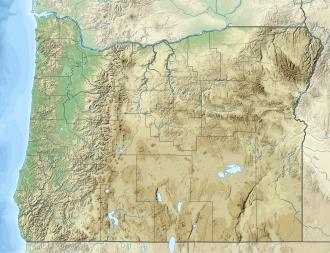| E. E. Wilson Wildlife Area | |
|---|---|
IUCN category V (protected landscape/seascape) | |
 | |
Map of the United States | |
| Location | Benton County, Oregon |
| Nearest city | Adair Village, Oregon |
| Coordinates | 44°41′57″N123°12′36″W / 44.6993°N 123.2101°W [1] |
| Area | 1,683 acres (6.81 km2) |
| Established | 1950 |
| Governing body | Oregon Department of Fish and Wildlife |
| www | |
The E. E. Wilson Wildlife Area (or E. E. Wilson Game Management Area) is a wildlife management area located near Corvallis, Oregon. The site was named for Eddy Elbridge Wilson, a member of the former Oregon State Game Commission for fourteen years before his death in 1961. [2] [3] Wildlife visible includes blacktail deer, pheasant, and quail. [4]
The area occupies a section of Camp Adair, a decommissioned United States Army cantonment which operated during World War II.

